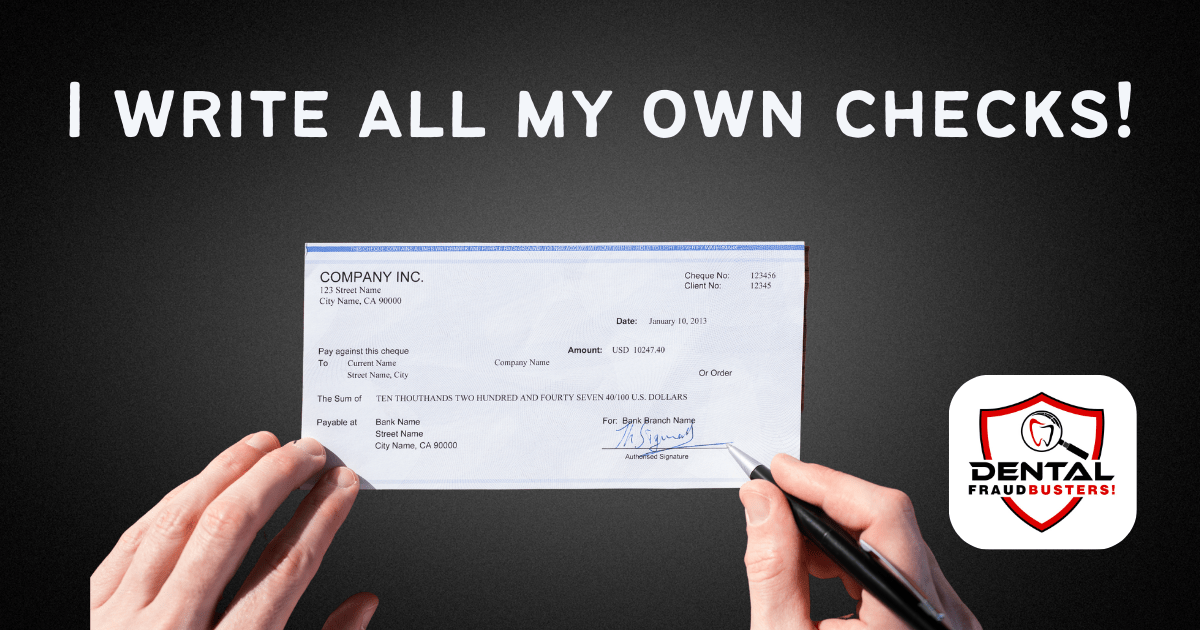“The Checkbook” conversation with a Dentist.
Taken from an interview conducted in 2015.
I was speaking with a dentist who suspected his office manager was stealing. He did not have any evidence, but felt that something was wrong.
“She’s a control freak, and never takes a day off.” (a red flag)
During our conversation I asked a lot of questions about practice operations, including how the doctor paid his bills.
Me: Do think your office manager could steal money from your bank account? Does she have access?
Dentist: No, I keep my checkbook at home, never in the office. We don’t use a bankcard, and I write all my own checks. She can’t access my account.
Me: Do you pay all your bills with a check?
Dentist: I use a credit card to pay a few expenses, and she does have access to my card. Most things are paid by check, and when I write a check, I always make sure to have the invoice in front of me, and write the invoice number on the check.
Me: Writing the invoice number on a check is a good practice. After you write a check, do you put the check in the mail yourself, or give it to your office manager to mail it for you?
Dentist: I give the checks to my office manager to put in the mail.
Me: From time time, does your office manager ever ask you to write a check for a miscellaneous office expense, such as lunch, part time wages, or patient refunds?
Dentist: Yes, she does.
Me: How often does she ask you to write checks? Once a week, once a month?
Dentist: Probably six times a month or so. Most are for patient refunds. You see, a few years ago, I started doing more large cases, so we started collecting fees up front, usually $10 to $15 thousand. When the treatment is completed, and if things went better than planned, we end up owing the patient a refund.
Me: How much are the refund checks? Ballpark number.
Dentist: I’d guess between $500 and $1000.
Me: That means you write refund checks to patients in the range of $3000-$6000 every month.
Dentist: Yeah, that sounds about right.
Me: That’s sounds a bit high. Let me look into it, and I’ll get back to you.
A few days later
l received copies of check images for the previous two years, as requested from the dentist’s bank.
Those check images confirmed that most of the patient refund checks issued during last two years were deposited into the office manager’s bank account.
The office manager had convinced the dentist that the refund checks were legitimate, when in fact they were completely fictitious.
This scheme had been going on for well over two years, and my investigation discovered she was stealing insurance checks as well.
When the dust finally settled, the loss was over $130K
What’s the moral of this story?
The dentist in this case could find no evidence that his employee was stealing, but he knew something did not feel quite right, and that made him suspicious.
Did you know that 85% of embezzlement cases were discovered by observing one of the Top 6 employee red flag behaviors?
So, pay attention when your Spidey sense tingles. Make sure to listen to your gut, and most important – do not ignore the red flags.

